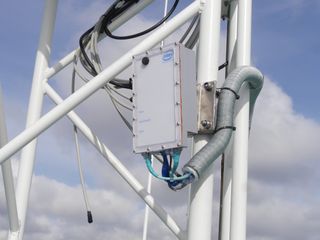Intel rolls out first 5G public test in Europe
A cruise liner sees one of the first industrial use cases of the technology

Intel has rolled out the first European test of a public 5G network to demonstrate industry use cases, the first of which will be high speed connections on-board a passenger cruise ship.
The work builds on existing efforts by Swedish telecoms giants Ericsson and Telia, who embarked on their own 5G roadmap in 2016 to bring the new technology to Tallinn and Stockholm, considered two of the most digitised cities in the world.

The Tallink Silja Europa cruise liner offers 5G super-fast Wifi to passengers while docked
The rollout will see the three companies work together to demonstrate the potential of 5G in a real-world setting for the first time, allowing industries to test the technology's interoperability between systems, cloud networks and end-user devices.
As an initial experiment earlier this month, a 5G network was implemented at the port of Tallinn in Estonia, where 2,000 passengers were able to access high speed connections on board a docked cruise liner.
Commenting on the launch, Asha Keddy, VP of the Next Generation and Standards group at Intel, said: "Our work together trialing early usages of 5G technologies and the experiences it will bring to different industries, demonstrates the importance of collaboration and the need for seamless flow of data across the network, cloud and devices to make 5G a reality.
"Intel's 5G platforms are critical enablers for today's active, real-world 5G trials with service providers around the globe, providing crucial insights and helping to define the future of 5G."
Get the ITPro. daily newsletter
Receive our latest news, industry updates, featured resources and more. Sign up today to receive our FREE report on AI cyber crime & security - newly updated for 2024.
The EU Digital Summit, a discussion on digital innovation taking place in Estonia this week, will also host a live test of a 5G network being used to remotely control industrial machinery using augmented reality. The hope is that super-fast, low-latency connections will be able take human operators out of hazardous environments, in this case excavation work.
The tests are supported by a 5G base station provided by Ericsson, making use of Intel's own development service known as the 5G Mobile Trial Platform, which is able to provide speeds of up to 3Gbps.
"High speed, low latency, guaranteed capacity and truly mobile is going to push the boundaries of digitalization and we want to be there pushing it together with our partners," said Gabriela Styf Sjman, global head of networks for Telia. "It's not only about building a new network but it's also about building a new way of thinking and perceiving what a mobile network can be and can do."
The EU Public Private Partnership initiative has committed over 700 million of public funding to a 5G roadmap as part of its Digital Single Market. Under the plans, the EU aims to standardise 5G connectivity efforts throughout member states as early as 2018, with large scale commercial rollout expected by the end of 2020.
In December last year, the EU agreed to give telecoms companies access to a 700MHz 5G mobile network to aid development of IoT networks over the next four years.
Images courtesy of Intel
Dale Walker is the Managing Editor of ITPro, and its sibling sites CloudPro and ChannelPro. Dale has a keen interest in IT regulations, data protection, and cyber security. He spent a number of years reporting for ITPro from numerous domestic and international events, including IBM, Red Hat, Google, and has been a regular reporter for Microsoft's various yearly showcases, including Ignite.





